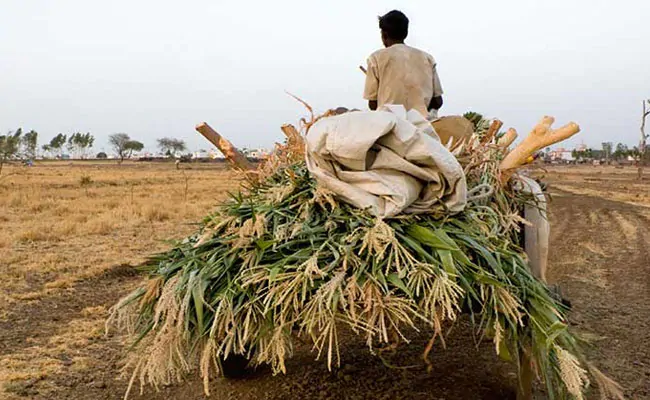Using agri-tech to empower smallholder farmers to reduce food inflation

Using agri-tech to empower smallholder farmers to reduce food inflation
Due to a variety of agri-tech circumstances, including supply chain disruptions, the turmoil in Ukraine, and pandemic restrictions in China, inflation is presently heating up the global economy. Food inflation, one of the key drivers of price increase overall, is a problem that import-dependent nations face, particularly those with limited resources who are already dealing with poverty and hunger. The key to resolving the issue is to maximize smallholder farmers’ food production and incorporate their products into the mainstream food ecology.
This will be made feasible in India and other developing nations thanks in large part to technological integration. Food production has to increase quickly while decreasing its negative environmental effects and reaching the places where it is most needed. However, given the difficulties that still face India and many other developing countries that produce food, such as fragmented smallholder farming, outmoded farming methods, a lack of access to suitable processing and storage facilities, a lack of funding, and inadequate quality control and off-take security, the issue of food production is escalating and becoming very difficult to solve.
Here, agri-tech may play a liberating role and close most of the system’s gaps, if not all of them, particularly for smallholder farmers.
Contextualizing the epidemic

The epidemic accelerated technological integration, which accelerated the adoption pace in India. For instance, there has been a considerable increase in the use of messaging platforms like WhatsApp and others to link farmers for more cost transparency, digital payments, etc. Due to the availability of information from a variety of sources, albeit the contextual validity of the same might be contested, it has also become increasingly popular to expand agricultural knowledge through YouTube and several other channels.
Digitizing farming clusters
For the digitization of the agriculture industry, a cluster strategy (loop them close) may be useful. In order to provide transparent data on production capacity, quality, and accessibility, staples will be created in clusters. The cluster plan will also make it possible to digitally connect farmers and FPOs, enabling stronger collaboration in a number of areas, including the supply of funding and ensuring that farmers have access to pertinent knowledge.
The establishment of processing, quality control, and ensuring efficient access to markets for greater price realizations are also made easier when the farmers scale up as a cluster.
Strengthening the links of supply chains

Farm supply chain management is significantly impacted by the rising cost of gasoline. When farmers drive to a mandi, they are unable to fill the fuel tank of their trucks completely. By establishing a collecting centre in the hamlet near the farmer, this problem may be resolved, and the costs incurred by the farmer will be greatly reduced. The strain of travelling to the mandi is also decreased, which is advantageous to the farmer financially.
By removing the cartel-based system, cutting down on intermediaries, and promoting the direct connection between farmers and merchants, and customers, producers will also face less exploitation. Since farmers gain from an average price increase of 5% to 7% as a result of the system of differential pricing based on quality segregation, non-cartel purchasing ensures that buyers pay the right price for the highest quality products. Additionally, it enables openness and traceability, which boosts consumer and farmer confidence.
Digital supply chains are essential for ensuring that food is delivered to all intended locations with the least amount of loss. Digital dashboards enable local, state, and federal governments to target their efforts where they are most needed and reinforce the supply chain’s weak links.
Creating full transparency and traceability

Whether you are exporting or consuming farm food, it is essential to understand where it originates from and what quality criteria it satisfies. It is feasible to guarantee that farmers have adequately compensated for their products thanks to traceability. Furthermore, it helps distributors track it and decide better on price or product recalls. The quality and freshness of the products that customers buy are assured. Traceability is also one of the greatest methods to decrease food waste since it analyzes storage and checkpoints and reduces time to market.
The digitization of categories of staple foods, fruits, and vegetables will be advantageous in the short and long terms. The strong partnership between agri-tech start-ups and businesses has to be acknowledged and supported by the government, cooperatives, and FPOs.
Constructing an improved food system together
)
The efforts mentioned will aid in creating a strong and resilient food system that will shield us from future catastrophic food shortages in addition to averting considerable food inflation in the immediate future. In doing so, a short-, medium and long-term perspective must be taken on how we address the aforementioned circumstances.
While increasing yield and availability is a priority in the short term, medium- and long-term solutions should focus on reducing environmental impact, eliminating shortages of high-quality inputs, facilitating seamless price discovery and market access, and, to top it all off, building a strong supply chain ecosystem. This may be done by policymakers, demand generators, and producers working together to eliminate any defects.




